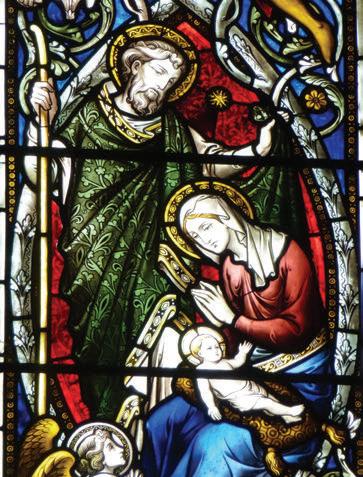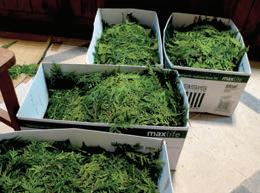FRIENDS of ARUNDEL CATHEDRAL
Summer 2021
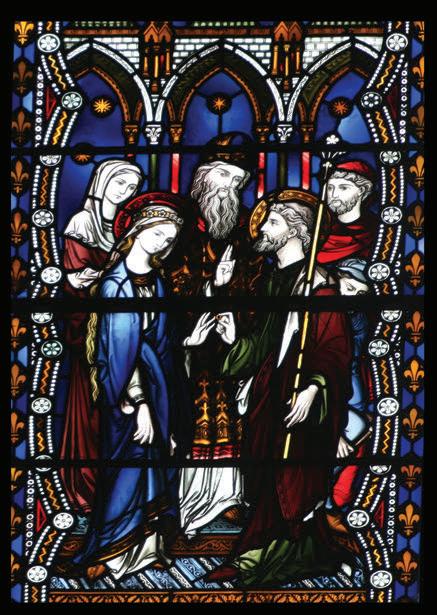
The just man shall blossom like the lily – Hosea 14.
This statue in the northeast nave of the Cathedral shows St Joseph holding a stem of lilies. Not in place in the early photographs of the Cathedral interior, the sculpture must have been added in later years.
The lily, symbol of purity and steadfastness, is associated with St Joseph through an ancient legend, that he was chosen to be Mary’s spouse by the blossoming of his staff into a spray of flowers, as depicted in the statue.
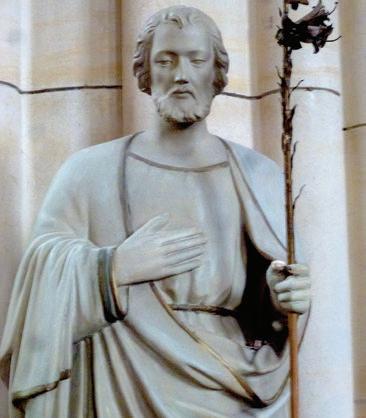
Dear Friends
Last December Pope Francis proclaimed ‘a year of Saint Joseph’, marking the onehundred-and-fiftieth anniversary of the declaration of Saint Joseph as the Patron of the Universal Church. In the accompanying Apostolic Letter the Holy Father reflects on the Covid pandemic, which, he writes, ‘has helped us to see more clearly the importance of ‘ordinary’ people who, though far from the limelight, exercise patience and offer hope every day. In this, they resemble Saint Joseph, the man who goes unnoticed, a daily, discreet and hidden presence, who nonetheless played an incomparable role in the history of salvation’.
So St Joseph is the focus for this issue of Cornerstone. The ‘unnoticed man’ is in fact represented in a number of scenes in the great stained glass window in the north transept, in the window above the Blessed Sacrament altar, as well as in the statue at the front of the nave (opposite).
A somewhat muted Friends’ Summer Vespers service was able to take place, a most enjoyable occasion despite being without the usual reception in the Collector Earl’s Garden. The event included a surprise investiture, see back page, and although the congregation were not allowed to join in, we were able to enjoy magnificent singing by the Cathedral Choir, including a solo by one of the Friends’ Choral Scholars.
Writing last summer’s editorial one was able to imagine an end to restrictions unparalleled in the Cathedral’s history. We have now learnt that no such clear closure is likely; we have to progress as best we can in uncharted territory.

Wishing all Friends a safe and restful summer.
Oliver Hawkins EditorThe great north transept window, by the eminent Victorian stained glass artist Nathaniel Westlake, shows Our Lady and the Christ Child enthroned, while the smaller lights show scenes from the life of Eve in contrast to incidents in the life of Our Lady. In the image on the cover, The Espousals of the Blessed Virgin, (contrasted with The Nuptials of Adam and Eve) Mary and Joseph are shown with the officiating priest and two others, possibly Mary’s parents Anne and Joachim. Unlike many representations in Western art depicting Joseph as an elderly man, he is shown here as a strong young man, entirely capable of protecting and supporting his wife.
In two other scenes, Joseph tilling the soil (above), and busy at his trade (opposite), he is depicted in active if not energetic roles. The description of Joseph in the gospels as a ‘tekton’ has traditionally been taken to mean a carpenter, but could cover other practical skills. The Oxford Dictionary of Saints claims that ‘his trade of carpenter suggests that he was impoverished’, but there is no reason to suppose that a skilled artisan should have struggled to make a living. Joseph was sufficiently practical to manage a long journey into Egypt, a period of residence there, and the return to Palestine, presumably supporting himself and his family through his professional skills.
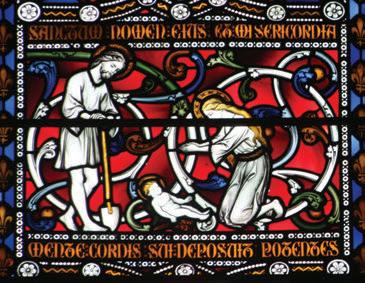
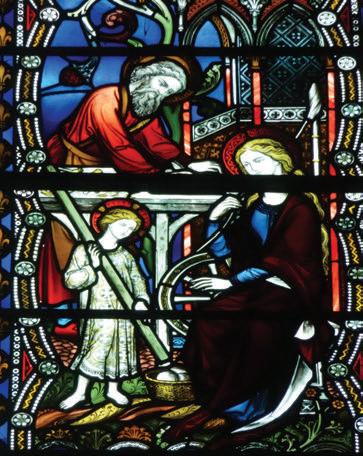
Few parishioners will be aware that what is now the Blessed Sacrament Altar was originally dedicated to St Joseph. The tall window above the altar, by the stained glass specialists Hardman & Powell, shows scenes from the life of Joseph. In the scene above we see the angel appearing to St Joseph in a dream, Joseph son of David, do not be afraid to take thy wife Mary to thyself, for it is by the power of the Holy Ghost that she has conceived this child. Matthew 1. 20
In the scene opposite we see St Joseph as Patron of the Mystical Body of Our Lord, with Popes, Kings and Bishops kneeling before him, while a dying man prays for a holy death, a cause associated with the Saint.
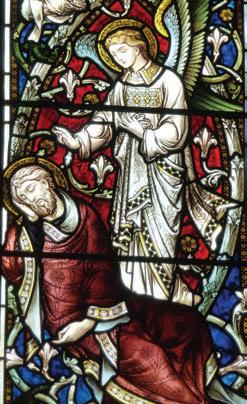
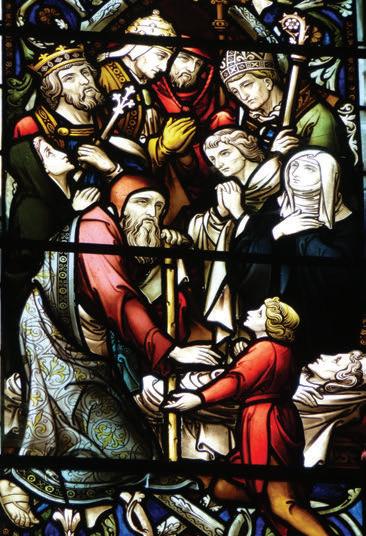
The Nativity, North Transept
The Nativity as depicted by Nathanial Westlake, among other scenes from the life of Our Lady. Joseph stands ready, with his staff and his green cloak.
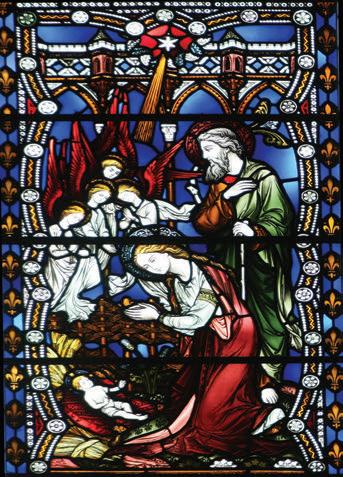
The Nativity, South Transept
The Nativity as depicted by Hardman & Powell, among scenes from the life of St Joseph. Here Joseph’s rather magnificent cloak serves to shelter his family.
